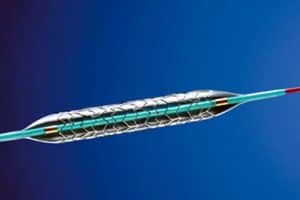
Concern Centers On Drug-Coated Stents. Millions of Americans could be walking around with tiny time bombs in their hearts. The concern centers on devices called drug-eluting stents. Doctors implant them in the hearts of about a million Americans a year to treat coronary artery disease. They generate some $5 billion a year in sales for the […]

Concern Centers On Drug-Coated Stents. Millions of Americans could be walking around with tiny time bombs in their hearts.
The concern centers on devices called drug-eluting stents. Doctors implant them in the hearts of about a million Americans a year to treat coronary artery disease. They generate some $5 billion a year in sales for the two companies that make them. But they may be doing more harm than good.
Next month a panel of experts will try to advise the Food and Drug Administration on what to do about it. But many top doctors and scientists admit they are in uncharted waters with a frightening problem that was largely unanticipated. By one estimate the devices already kill 2,000 Americans a year and no one knows what the long-term danger will be.
To understand the potential hazard, it helps to look at the history of efforts to open the arteries to the heart when they get clogged with cholesterol-containing plaque. That blockage leads to shortness of breath and the chest pains called angina. If the artery closes completely the result is a heart attack with destruction of heart muscle and often death.
Beginning around 1980, doctors started using tiny balloons inserted on wires through the veins and guided by X-rays to push open the clogged arteries. This procedure, called angioplasty, often worked but with a problem. In about half the cases the artery would close up again within a few weeks or months, an outcome called restenosis. The re-shutting of the arteries occurs because the blood vessels respond to the treatment as if they suffered a slight wound. They try to heal by growing more cells which can clog the artery again.
Thwarting the body’s own healing process
To solve the problem, starting in 1994, cardiologists put tiny pieces of wire mesh called stents around the balloons. These stay in place as a piece of scaffolding to try to keep the arteries open.
These helped, but not enough.
Cells still grew over the wire, and in 20 percent to 30 percent of the cases, the vessel clogged again.
Drug-eluting stents (DES) appeared as the next solution. These give off a drug that prevents cell growth, and for that, they work well. The restenosis rate fell to about 5 percent. In 2003, soon after the FDA approved them, drug-eluting stents captured most of the market, even though they cost about $2,000 compared to $800 for the bare metal version.
Doctors began seeing patients suffer from heart attacks that seemed to be triggered by the new stents. Because the drug-eluting stents are so effective at stopping the cell proliferation inside the arteries, the DES’s end up as a piece of metal sticking out in the artery. That creates a perfect place for a blood clot to form and instantly block the artery. The result? A potentially fatal heart attack.
Dr. Jeffrey Moses of Columbia University, who conducted some of the original studies of the DES’s, estimates the danger of a blood clot at 1 in 500 patients a year. For every million of the devices implanted, that would add up to 2,000 clots a year although not all of them would be fatal.
But an estimate from Drs. Sanjay Kaul and George Diamond from Cedars Sinai in Los Angeles, published on the Web site of the American College of Cardiology, estimates that deaths from the new devices exceed 2,000 a year. Studies from Europe regard the danger to be many times higher. Because the devices are so new no one knows how long the hazard persists.
Already, many cardiologists are cutting back from using the devices. Sales are dropping dramatically. The FDA panel may well recommend they not be used at all.
Companies are searching for alternatives, including balloons that give off the drugs and would be removed at the time of the procedure, as well as stents that dissolve a few weeks after they are implanted.
What’s next?
The big question now facing the FDA is: What should the estimated 4 million patients who already have a DES do?
The devices cannot be removed safely or easily. One preventive measure is to keep the patient on the blood-clotting medication Plavix for months or even indefinitely. But that medicine can cause severe bleeding, including a type of deadly stroke, and it costs more than $1,200 a year.
DES manufacturers Boston Scientific and Johnson & Johnson could end up rivaling Vioxx maker Merck as targets of lawsuits from people who suffer heart attacks.
The origin of this terrifying problem is that medical devices, like drugs, get tested for a few months in a few hundred or at most a few thousand of people before the FDA approves them.
Many experts are clamoring for better methods of assuring safety before devices like these go into millions of people for a lifetime.
The personal injury attorneys at Parker Waichman LLP offer free, no-obligation case evaluations. For more information, fill out our online contact form or call 1-800-YOURLAWYER (1-800-968-7529).


